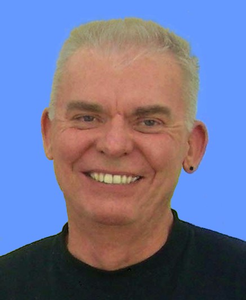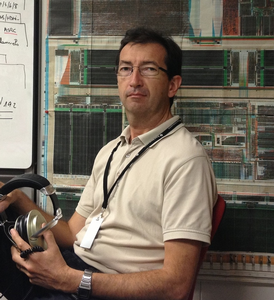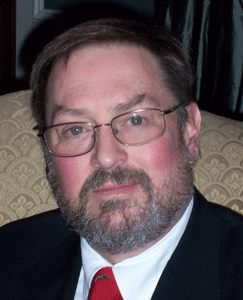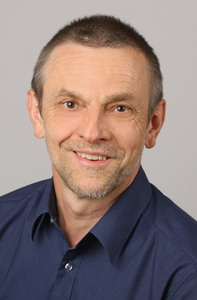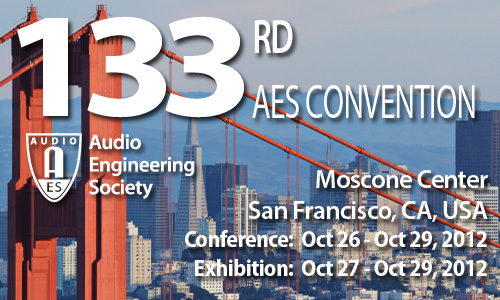
AES San Francisco 2012
Product Design Session Details
Friday, October 26, 9:00 am — 11:00 am (Room 123)
PD1 - Audio DSP Requirements for Tomorrow's Mobile & Portable Devices
Presenters:Bob Adams, ADI
Juha Backman, Nokia Corporation - Espoo, Finland
Howard Brown, IDT
Peter Eastty, Oxford Digital Limited - Oxford, UK
Alan Kramer, SRS Labs
Cyril Martin, Research in Motion - Germany
Abstract:
As the convergence of communications, entertainment, and computing races ahead, largely centered on portable and mobile devices where form factors are shrinking and style wins out over practicality of design in some instances, the challenges in delivering the audio DSP to provide good sound and differentiated effects are discussed by a panel of experts representing semiconductor manufacturers, mobile/portable device manufacturers, and DSP IP providers.
Friday, October 26, 10:45 am — 12:30 pm (Room 132)
PD2 - AVB Networking for Product Designers
Chair:Rob Silfvast, Avid - Mountain View, CA, USA
Panelists:
John Bergen, Marvell
Jeff Koftinoff, Meyer Sound Canada - Vernon, BC, Canada
Morten Lave, TC Applied Technologies - Toronto, ON, Canada
Lee Minich, Lab X Technologies - Rochester, NY, USA
Matthew Mora, Chair IEEE 1722.1 - Pleasanton, CA, USA
Dave Olsen, Harman International
Michael Johas Teener, Broadcom - Santa Cruz, CA, USA
Abstract:
This session will cover the essential technical aspects of Audio Video Bridging technology and how it can be deployed in products to support standards-based networked connectivity. AVB is an open IEEE standard and therefore promises low cost and wide interoperability among products that leverage the technology. Speakers from several different companies will share insights on their experiences deploying AVB in real products. The panelists will also compare and contrast the open-standards approach of AVB with proprietary audio-over-Ethernet technologies.
Friday, October 26, 4:00 pm — 6:00 pm (Room 130)
PD3 - Don't Make Your Product a Noise Nightmare
Presenter:William E. Whitlock, Jensen Transformers, Inc. - Chatsworth, CA, USA; Whitlock Consulting - Oxnard, CA, USA
Abstract:
Audio systems that operate on AC power will experience interference in the form of ground voltage differences, magnetic fields, and electric fields. Although, theoretically, balanced interfaces are immune to such interference, realizing high immunity in real-world, mass-produced equipment is not trivial. Designers who use ordinary balanced input stages fail to recognize the critical importance of very high common-mode impedances, which are the advantage of transformers. Because legacy test methods don’t account for signal sources, most modern audio gear has poor immunity in real-world systems. The new IEC test for CMRR is explained as well as excellent alternatives to ordinary input stages. Other ubiquitous design errors, such as the “pin 1 problem” and the “power-line prima donna” syndrome are described as well as avoidance measures.
Saturday, October 27, 9:00 am — 10:00 am (Room 120)
PD4 - Audio in HTML 5
Presenters:Jeff Essex, AudioSyncrasy
Jory K. Prum, studio.jory.org - Fairfax, CA, USA
Abstract:
HTML 5 is coming. Many expect it to supplant Flash as an online rich media player, as Apple has made abundantly clear. But audio support is slow in coming, and there are currently marked differences between browsers. From an audio content standpoint, it's the Nineties all over again. The W3C's Audio Working Group is developing standards, but this is a fast-moving target. This talk will provide an update on what's working, what isn't.
Saturday, October 27, 12:00 pm — 1:00 pm (Room 120)
PD5 - Graphical Audio/DSP Applications Development Environment for Fixed and Floating Point Processors
Presenter:Miguel Chavez, Analog Devices
Abstract:
Graphical development environments have been used in the audio industry for a number of years. An ideal graphical environment not only allows for algorithm development and prototyping but also facilitates the development of run-time DSP applications by producing production-ready code. This presentation will discuss how a graphic environments’ real-time control and parameter tuning makes audio DSPs easy to evaluate, design, and use resulting in a shortened development time and reduced time-to-market. It will then describe and explain the software architecture decisions and design challenges that were used to develop a new and expanded development environment for audio-centric commercially available fixed and floating-point processors.
Sunday, October 28, 9:00 am — 10:30 am (Room 120)
PD6 - Multimedia Device Audio Architecture
Presenter:Laurent Le Faucheur, Texas Instruments - Villeneuve-Loubet, France
Abstract:
A hardware audio architecture solves several mobile low power multimedia application processor constraints related to: legacy software reuse, signal processing performance, power optimization, multiple data format interfaces, low latency voice and tones, low system costs. The presented audio architecture is optimized for solving those constraints with several assets: a powerful DSP, a low-power Audio Back-End processor, and a high-performance mixed-signal audio device. The DSP audio framework enables the integration of multiple audio features developed by third-parties.
Sunday, October 28, 11:45 am — 12:45 pm (Room 121)
PD7 - A Next Generation Audio Processing Suite for the Enhancement of Acoustically Challenged Devices
Presenter:Alan Seefeldt, Dolby Laboratories - San Francisco, CA, USA
Abstract:
This tutorial will describe the design principles and algorithms behind a recently released commercial audio processing suite intended to enhance the sound of acoustically challenged devices such as laptops, tablets, and mobile phones. The suite consists of numerous algorithms, all operating within a common frequency domain framework, with several of these algorithms tuned specifically for the acoustics of the device on which it operates.
Sunday, October 28, 1:45 pm — 2:45 pm (Room 123)
PD8 - Implementing Application Processor Agnostic Audio Systems for Portable Consumer Devices
Chair:Jess Brown, Wolfson Micro Ltd.
Abstract:
This tutorial will outline the audio future trends of the portable consumer device and demonstrate how this is achieved with advanced audio solutions. Covering areas, such as HD audio voice, capture, playback, and share, this tutorial will outline the total "mouth to ear" audio solution, from a technology and device standpoint.
Sunday, October 28, 5:00 pm — 6:00 pm (Room 123)
PD9 - Audio for iPad Publishers
Chair:Jeff Essex, AudioSyncrasy
Abstract:
Book publishers are running to the iPad, and not just for iBooks, or one-off apps. They're building storefronts and creating subscription models, and the children's book publishers are leading the way. Through two case studies, this talk will explore how to build the audio creation and content management systems needed to produce multiple apps in high-volume environments, including VO production, concatenation schemes, file-naming conventions, audio file types for iOS, and perhaps most important, helping book publishers make the leap from the printed page to interactive publishing.
Monday, October 29, 9:00 am — 10:00 am (Room 130)
PD10 - Ethernet Standard Audio
Presenter:Stephen Lampen, Belden - San Francisco, CA, USA
Abstract:
Ethernet has been around since 1973, and with the rise of twisted-pair-based Ethernet there have been many companies who played around to get Ethernet to work for multichannel audio. The problem is that all of their solutions were proprietary and not always compatible between manufacturers. This was the impetus behind IEEE 802.1BA AVB, a re-write of the Ethernet standard to include many bells and whistles for audio and video applications. This presentation will show AVB switches, how they are different, and what is in this new standard.
Monday, October 29, 10:15 am — 12:15 pm (Room 130)
PD11 - Rub & Buzz and Other Irregular Loudspeaker Distortion
Presenter:Wolfgang Klippel, Klippel GmbH - Dresden, Germany
Abstract:
Loudspeaker defects caused by manufacturing, aging, overload, or climate impact generate a special kind of irregular distortion commonly known as rub & buzz that are highly audible and intolerable for the human ear. Contrary to regular loudspeaker distortions defined in the design process the irregular distortions are hardly predictable and are generated by an independent process triggered by the input signal. Traditional distortion measurements such as THD fail in the reliable detection of those defects. The Tutorial discusses the most important defect classes, new measurement techniques, audibility, and the impact on perceived sound quality.
